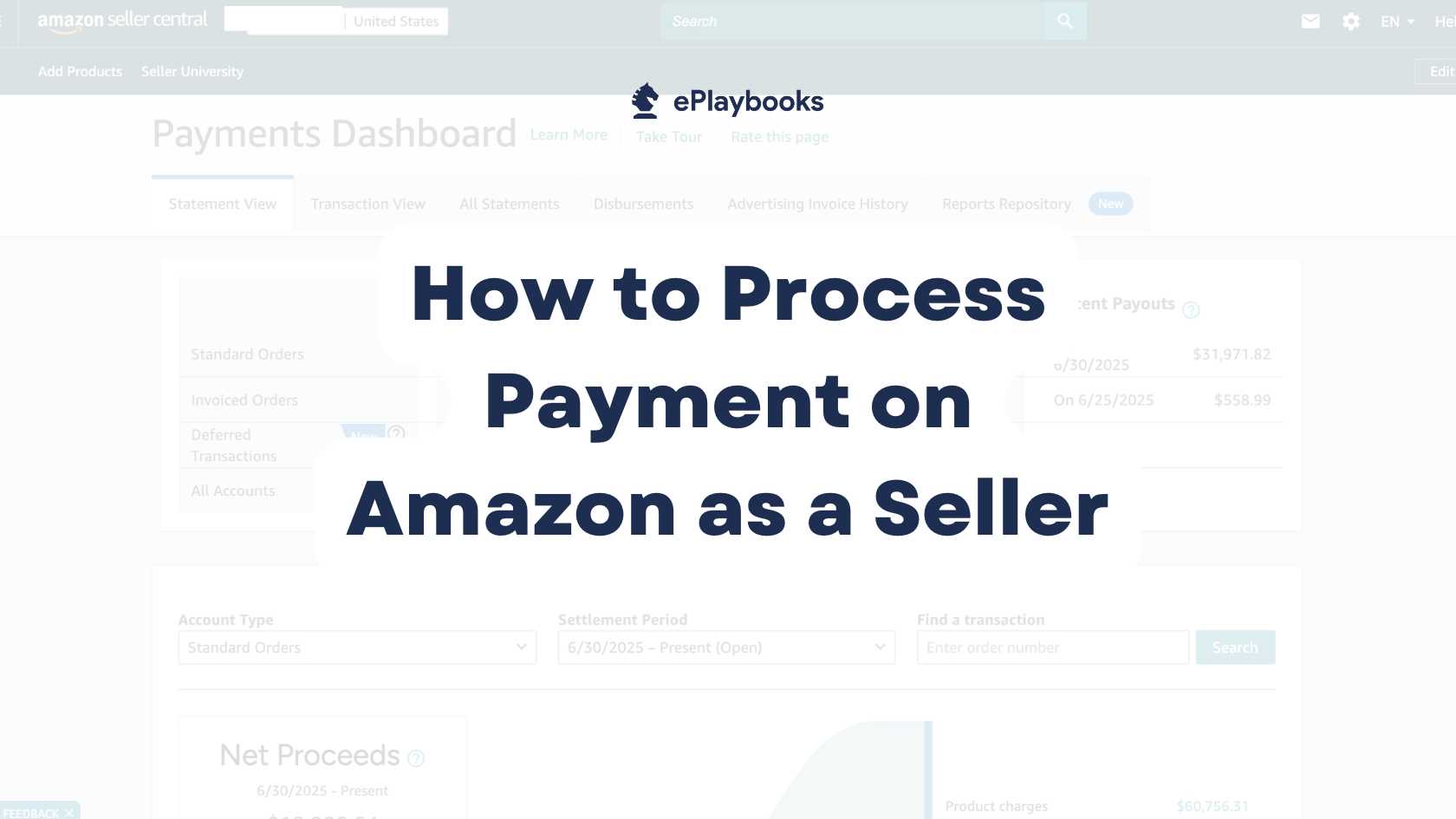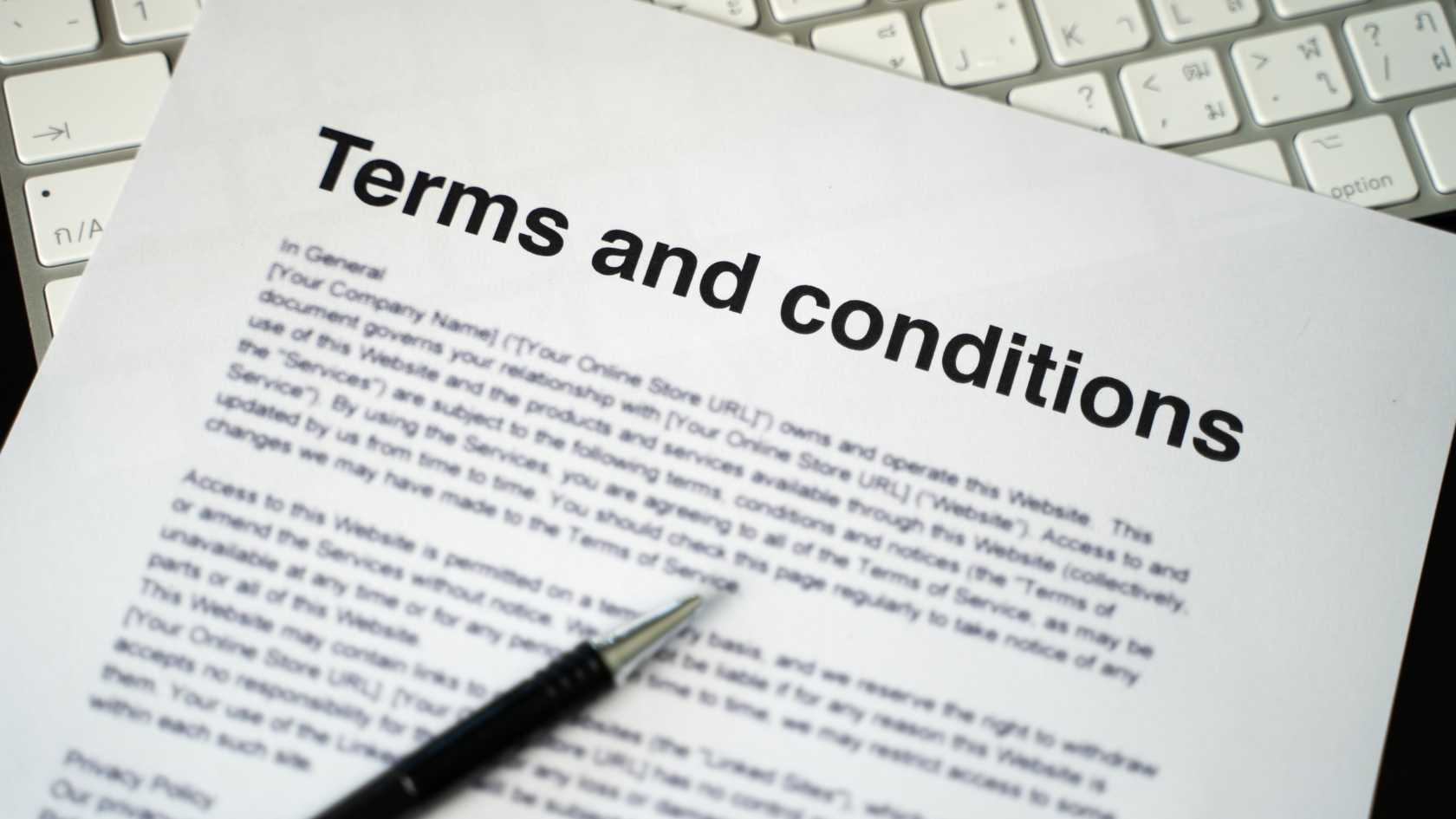Turbo-Charge Your Revenue!
You’ve probably already considered selling on Amazon but its way easier than you think.
Call Us Now
Selling on Amazon comes with lots of opportunities. Your products reach millions of potential buyers, orders start rolling in, and your business begins to scale. However, once the sales start flowing, you need to understand how Amazon’s payment process works.
While Amazon makes it easy to sell, the payment process can seem complicated. Unlike other ecommerce platforms where payment is processed almost instantly, Amazon has a payment structure that comes with some terms, waiting periods, and sometimes delays.
Understanding exactly how the money moves is essential, from disbursement schedules to fees, account reserves, and bank transfers.
In this guide, we will walk you through everything you need to know about processing payments on Amazon.

Amazon pays professional sellers every two weeks. However, this comes with a seven-day holding period to give buyers time to inspect their orders and place any refunds if needed.
On the settlement date, Amazon initiates a transfer of your available balance (minus fees and any held reserves) to your registered bank account.
Sellers may experience delays that extend beyond the 14 days due to factors like the timing of order delivery. For example, if you have orders delivered within 7 days of the payout date, the balance will be moved to the next payment cycle.
Amazon uses ACH transfers, and funds typically arrive in your bank within 3–5 business days, depending on your bank and country.
Depending on a seller’s agreement with Amazon, Amazon provides three payment terms for Amazon Vendors: Net 30, Net 60, and Net 90. This means that sellers receive payment after 30, 60, and 90 days, respectively.
Amazon uses a bi-weekly payment schedule for most sellers, meaning you get paid every 14 days. However, those payments don’t always reflect your total sales during that period. They’re based on what Amazon calls “available funds.” Amazon generates a settlement report every 14 days, which includes your total sales, any refunds or returns, all Amazon fees, and adjustments (if any).
After subtracting all fees and reserves, Amazon calculates your available balance. Not all sales in the cycle are immediately eligible for payout. Amazon only includes orders that are shipped and confirmed, outside the return window, and not subject to a reserve hold (this ensures the customer has received their product and hasn’t initiated a refund).
After the settlement report is finalized, Amazon initiates a disbursement to your bank. This typically happens within 1–2 business days after the 14-day cycle ends. Bank processing times vary but usually take another 2–5 business days. So, it could take up to 20-21 days to have your payment hit your bank account.
Your payment may come with different labels depending on the transaction:
You can view your Amazon payment schedule through your Amazon Seller Central account:
Amazon’s standard payment schedule is bi-weekly, but some sellers may receive daily or next-day payouts under certain conditions:
You can request an early payout on your Amazon Seller Central dashboard using the “Request Transfer” button. Unfortunately, this is not a real payout. Amazon does not offer daily payouts. Using the Request a Transfer button will only initiate the transfer of money available in your account for orders sold within the last 14 days.
Only sellers who meet certain criteria are eligible for next-day payouts:
Amazon Express Payout is a fast-tracked payment option that allows eligible sellers to receive their funds within 24 hours of disbursement, instead of waiting the typical 3–5 business days for the transfer to arrive in their bank account.
Amazon does not allow sellers to enroll in Express Payout manually. Instead, it’s enabled automatically if:
To know if you can access Amazon Express Payout, navigate to Seller Central > Reports > Payments > Deposit Methods. Under your current bank account, look for a label or note saying “Eligible for Express Payout” or “Express Payout enabled.”
Amazon’s Account Level Reserve refers to a portion of your funds that Amazon holds back temporarily instead of releasing them in your regular disbursement. It acts as a financial safety net to cover potential risks like returns, chargebacks, A-to-Z Guarantee claims, negative performance metrics, or suspicious activity. The amount and type of reserve depend on your account performance, selling history, and order volume.
Amazon categorizes Account Level Reserves into tiers based on seller performance, risk profile, and order history. These tiers define how much of your funds are held and for how long.
Here are the criteria for each tier:
This tier is for new Amazon sellers. Amazon holds back 100% of payments processed over the past 7 days, including the value of all unresolved transaction disputes.
This tier is for Amazon sellers who have been selling for a year with at least 100 completed orders. Sellers can also move to tier 2 if they have been selling for 6 months, have a minimum of 100 completed orders, and have maintained an Order Defect Rate (ODR) below 1%. In this tier, Amazon holds 3% of your payments processed daily, averaged for 28 days, or the value of all unresolved transaction disputes.
This is for Amazon sellers in tier II who have maintained an Order Defect Rate (ODR) of less than 1% over 60 days. At this level, Amazon only holds back the value of unresolved transaction disputes. If your ODR reaches 1%, you will go back to tier II.
To minimize your Amazon Account Level Reserve, you need to reduce the risk signals that cause Amazon to hold back your funds. While you can’t eliminate the reserve, you can significantly reduce the amount and duration Amazon holds.
Amazon uses your account health score to determine your risk level. The better your health, the lower your reserve.
Focus on:
FBA sellers are seen as lower risk because Amazon handles shipping, returns, and customer service. Orders fulfilled via FBA are less likely to trigger rolling reserves. With faster delivery and fewer complaints, you can maintain better metrics and reduce the amount and duration Amazon holds your payment.
A-to-Z Guarantee claims can negatively impact your seller reputation and increase reserve hold. Always respond and resolve claims fast, preferably before Amazon makes a decision.
Use a U.S. bank account (or a marketplace-local bank) that supports real-time payments. Amazon may delay funds to accounts with verification issues or high FX risk.
Once you’ve sold consistently for 3 to 6 months with good metrics, Amazon may automatically reduce your reserve.
Here’s a breakdown of the most common payment problems Amazon sellers face, along with clear solutions to resolve them.
You may experience a situation where your payout date has passed, but no funds have arrived in your bank account.
To resolve this, you can check "Statement View" in the Amazon Seller Central account > Reports > Payments to verify that the disbursement was sent.
Check to confirm that your bank details are accurate by going to Settings > Account Info > Deposit Methods. Allow up to 5 business days for the bank to process the transfer.
If there are no funds after 5 days, you can contact Amazon Seller Support with your disbursement ID.
If your funds are frozen due to account suspension or poor performance, check your performance notifications for any warnings or suspensions.
If your account is suspended, submit a Plan of Action (POA). Once your account is reinstated, payments are usually released within 14 days.
Disbursement may fail due to an invalid bank account or routing number.
To resolve this, go to Settings > Account Info > Deposit Methods and update your bank details with the correct information.
Ensure you are using a bank account in the country of the marketplace, or use Amazon’s Currency Converter for Sellers (ACCS).
If Amazon says payment was sent, but your bank has no record, wait 3–5 business days post-disbursement.
If payment still doesn’t appear, contact your bank with the Disbursement Reference Number (found in your payment report). If unresolved, open a case with Amazon Seller Support.
You may experience a situation where the payout amount is less than expected due to currency conversion rates.
To resolve this, use Amazon’s Currency Converter for Sellers (ACCS) or integrate with a service like Payoneer. You also want to keep an eye on real-time FX rates and fees applied by your payment processor.
Read also: Step-by-step guide to Amazon Seller Repay.
While Amazon handles disbursements automatically, strategically managing your payment schedule helps you maintain healthy cash flow, reinvest efficiently, and avoid disruptions in inventory or advertising.
Here are practical tips to manage your Amazon payment schedule effectively:
Understanding how Amazon’s payment system works can help you maintain a steady cash flow and scale your business more effectively. Track your transactions and ensure your financial settings are always up to date to avoid any delays and get paid quickly.
Amazon schedules disbursements bi-weekly (every 14 days) for most Amazon sellers. On the payout date, Amazon takes out referral, FBA, advertising, etc., fees, reserves and holds, and the available balance is transferred to your linked bank account via ACH.
It typically takes between 1–5 business days for payment to arrive, depending on your bank.
Amazon handles the entire payment process between the buyer and the seller. As a seller, you don’t directly collect payments from customers.
Instead, Amazon collects the money from buyers, deducts applicable fees, and then deposits your earnings into your bank account according to your payment schedule.
Yes, you can use a personal bank account to receive payments from Amazon when starting as a seller, especially as an individual seller. However, the bank account must be in your name (matching your Amazon Seller Central account) and should be able to receive ACH or local transfers.
Amazon offers a payment option called “Pay on Delivery” (POD) for eligible orders. This allows customers to pay for their order only after it has been delivered, rather than paying online at checkout. However, not all products offer POD. For products that offer POD, you can select “Pay on Delivery” as your payment method during checkout.
You’ve probably already considered selling on Amazon but its way easier than you think.
Call Us Now